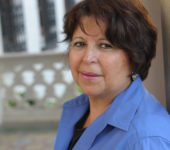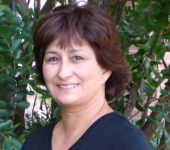• by Linda Cantú, Ph.D., and Adela Solís, Ph.D. • IDRA Newsletter • April 2006 •




An important goal of school districts is to have sufficient numbers of teachers highly qualified to teach rigorous content and using the most cutting-edge pedagogy indicated by the latest research. Reaching this goal has been hampered for some time by various factors, such as teacher attrition and increasing student enrollments (U.S. Department of Education, 2005).
Schools are finding it especially challenging to fill the shortages of highly qualified teachers in the field of English as a second language (ESL) and bilingual education (Chauncey, 2005). The impact of this problem is especially felt by children who are English language learners. For the 2004-05 school year, there were 631,534 English language learners in Texas comprising 14.4 percent of the student population (Texas Education Agency, 2005).
Transitions and the Bilingual/ESL Teacher Need
IDRA’s project, Transitions, is funded by the federal Transitions to Teaching program to assist school districts in meeting their goals and the No Child Left Behind Act (NCLB) requirement that all teachers in all academic subjects be highly qualified by 2005-06. The Transitions project assumes that only through a force of talented and caring teachers can English language learners achieve high standards. Its work is crafted to ensure that this occurs.
Transitions is expanding and improving current educator preparation programs to create shorter routes to certification and academically-rigorous training experiences. By doing this, English language learners will benefit by having sufficient numbers of qualified and motivated teachers.
The field of ESL and bilingual education struggles because the number of students who need these teachers’ skills grows every year. In one year, between 2004 and 2005, the number of English language learners in Texas increased by 4.2 percent. At the same time, there is a shortage of ESL and bilingual teachers altogether. In 2004-05, for example, there were 24,790 ESL and bilingual teachers (an increase of about 5,000 from 2002-03). This year, if the average class size for grades kindergarten through six is 20 students, there would be a need for about 31,576 ESL and bilingual teachers, with a shortage of 6,786 of these teachers. Transitions provides an excellent opportunity to create sufficient numbers of highly-qualified teachers.
Transitions Model and Implementation
Transitions, as a five-year project, is enabling school districts to tap into new groups of professionals with outstanding credentials and bilingual skills as prospective bilingual education and ESL teachers. The project has the following components: (1) early identification and recruitment; (2) pre-service training for certification and placement; and (3) sustained in-service training and professional development, mentoring and support.
Through these components, Transitions conducts the following activities: high-quality pre-service coursework, payment of tuition and related expenses, teaching internships, mentoring and other new teacher support, and sustained in-service and professional development, including strategies to influence retention.
Under NCLB, teachers participating in an alternative teacher program, such as Transitions, will be considered “qualified” and begin their certification program as teachers of record. This project is specifically recruiting and preparing mid-career professionals and recent college graduates who have content expertise in core subject areas and who are linguistically prepared and culturally competent for certification in ESL and bilingual education.
Over the five years, the project intends to identify and recruit 150 second-career professionals and recent college graduates and to provide pre-service training for certification and support to ensure that candidates become fully qualified to teach in ESL and bilingual classrooms.
Subsequently, Transitions will place and support the retention of qualified participants in ESL and bilingual classrooms within partner high-need school districts by:
- Placing successful participants as teacher interns during the teacher preparation and credentialing phase, and
- Providing project participants with mentoring, specialized support and high-quality in-service training during the certification process and one year beyond.
IDRA is partnering with several Texas universities, colleges and school districts to prepare and place eligible teacher candidates in teaching positions in high-need school districts. Teachers participate in classes at the college, university, or school district in content and pedagogy, and they receive intensive sessions and classes to prepare them to successfully pass the required certification exams.
Once teachers are hired by school districts, IDRA provides additional support to these first-year teachers in the form of pláticas (discussions) and other professional development to strengthen their confidence and teaching skills.
In addition, the candidates are assigned an IDRA mentor during their first two years of teaching. This mentor, an expert bilingual professional, works cooperatively with the school-assigned mentor and the university teacher supervisor. The IDRA mentor holds monthly sessions with the Transitions teachers. IDRA mentors can provide an array of in-class assistance including: (1) observations and feedback; (2) lesson demonstrations; (3) co-teaching a lesson; (4) lesson planning to incorporate Texas Essential Knowledge and Skills (TEKS) objectives; (5) room arrangement and setting up learning centers; and (6) creating positive discipline and other areas considered essential for teacher success.
Calling Potential Highly Qualified Teachers
Transitions is in its first year of operation in the Dallas/Fort Worth, East Texas, Houston, Laredo, Rio Grande Valley and San Antonio. The school districts meet specific criteria that qualify them as high-need school districts and typically have needs for bilingual and ESL teachers in grades pre-kindergarten through four. These schools share the IDRA goal and commitment to bring a talented and caring cadre of professionals to their schools, where there await numbers of bilingual children eager to excel academically and fulfill their aspirations to become happy and well-educated bilingual adults.
Recruitment is underway to attract professionals from other fields with outstanding qualifications to transition into teaching and make their careers as highly-qualified bilingual and ESL teachers.
For more information contact Dr. Linda Cantú at IDRA 210-444-1710 or e-mail linda.cantu@idra.org.
Resources
Chauncey, C., ed. Recruiting, Retaining and Supporting Highly Qualified Teachers. (Cambridge, Mass.: Harvard University Press, 2005).
Texas Education Agency. Texas Public Schools Statistics – Pocket Edition, 2004-2005.
U.S. Department of Education. A Highly Qualified Teacher in Every Classroom, The Secretary’s Fourth Annual Report on Teacher Quality (2005),
Linda Cantú, Ph.D., is director of the Transitions project in the IDRA Division of Professional Development. Adela Solís, Ph.D., is a senior education associate in the IDRA Division of Professional Development. Comments and questions may be directed to them via e-mail at feedback@idra.org.
[©2006, IDRA. This article originally appeared in the April 2006 IDRA Newsletter by the Intercultural Development Research Association. Permission to reproduce this article is granted provided the article is reprinted in its entirety and proper credit is given to IDRA and the author.]


